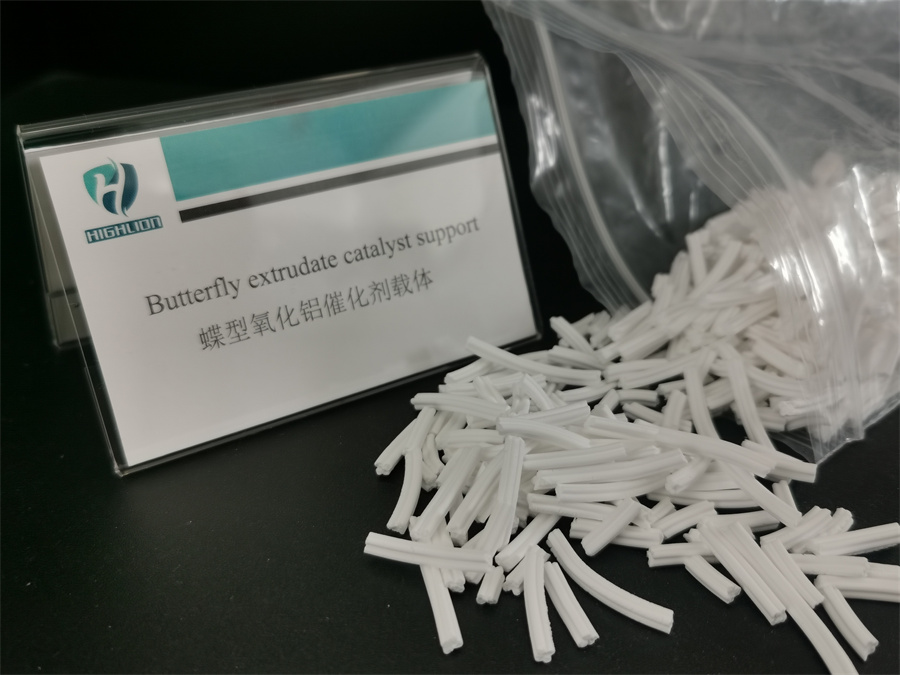Butterfly-shaped alumina catalyst support

Butterfly-shaped alumina catalyst supports are specially designed catalyst carrier materials widely used in chemical engineering, environmental protection, energy, and other fields due to their unique physical structure and excellent performance. Below is a detailed introduction:
1.Basic Definition and Structural Features
– Shape Design: The “butterfly” shape (or “wing-like” structure) typically features symmetrical wings to increase specific surface area and improve fluid distribution.
– Material: Primarily composed of high-purity alumina (γ-Al₂O₃, α-Al₂O₃, etc.), formed into specific shapes via processes like extrusion, tableting.
2.Key Properties
– High Specific Surface Area: Ranging from 100–300 m²/g, providing ample active sites for catalyst loading (e.g., Pt, Pd, Ni).
– Excellent Thermal Stability: Withstands high temperatures (up to 1000°C), suitable for highly exothermic or endothermic reactions.
– High Mechanical Strength: Resistant to crushing and abrasion, ideal for fluidized or fixed-bed reactors.
– Controlled Pore Size Distribution: Combinations of micropores (<2 nm), mesopores (2–50 nm), and macropores (>50 nm) optimize mass transfer efficiency.
– Chemical Inertness: Resistant to acid/base corrosion, preventing side reactions with reactants/products.
3.Manufacturing Process
1)Raw Material Processing: pseudo-boehmite are precipitated and aged to form alumina precursors.
2)Shaping: The butterfly shape is achieved via mold extrusion, tableting, with pore-forming agents (e.g., starch) optionally added to adjust porosity.
3)Calcination: High-temperature sintering (500–1200°C) stabilizes the crystal phase (e.g., γ-Al₂O₃ for acidic reactions, α-Al₂O₃ for high-temperature applications).
4.Applications
– Petrochemicals: Hydrodesulfurization (HDS), fluid catalytic cracking (FCC).
– Environmental Catalysis: Automotive exhaust treatment (SCR denitrification).
– New Energy: Methane reforming for hydrogen production, fuel cell catalyst supports.
– Special Reactions: The butterfly shape optimizes gas flow distribution, reducing pressure drop in high space-velocity conditions.

